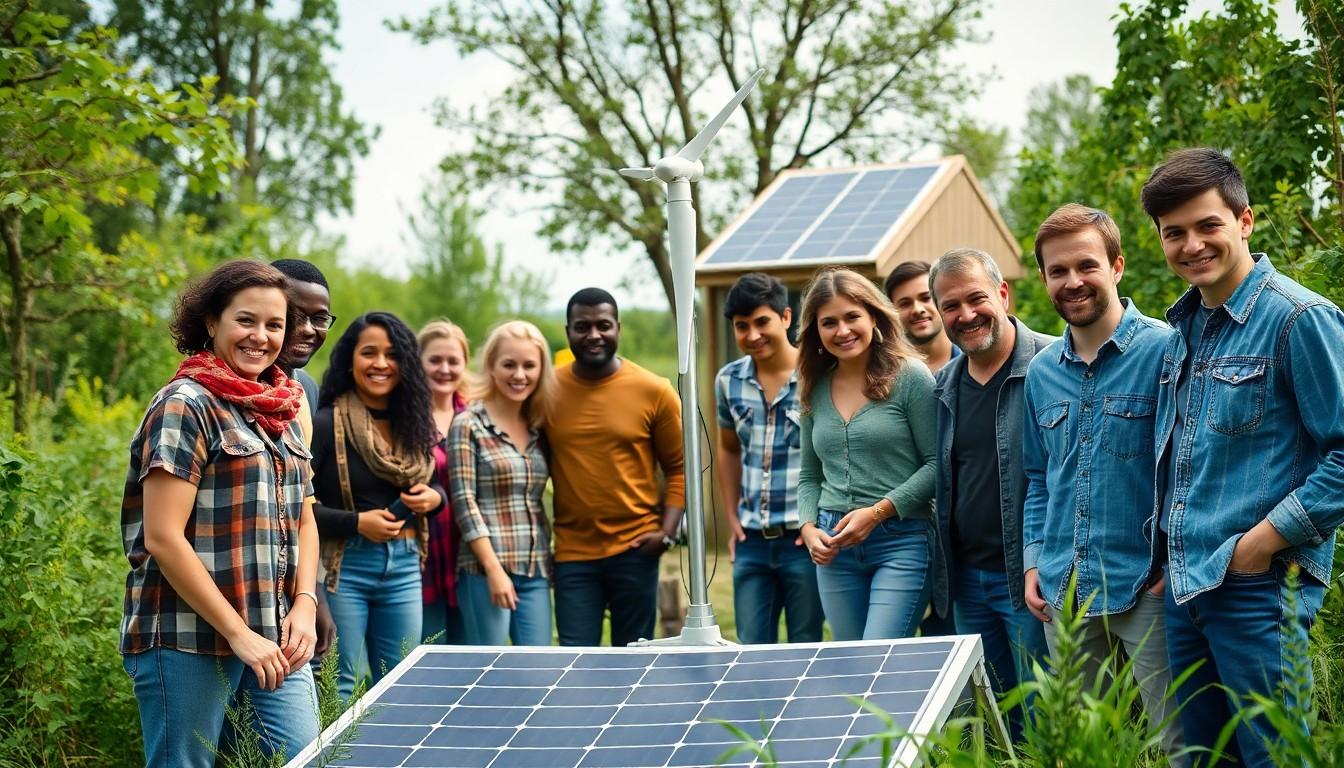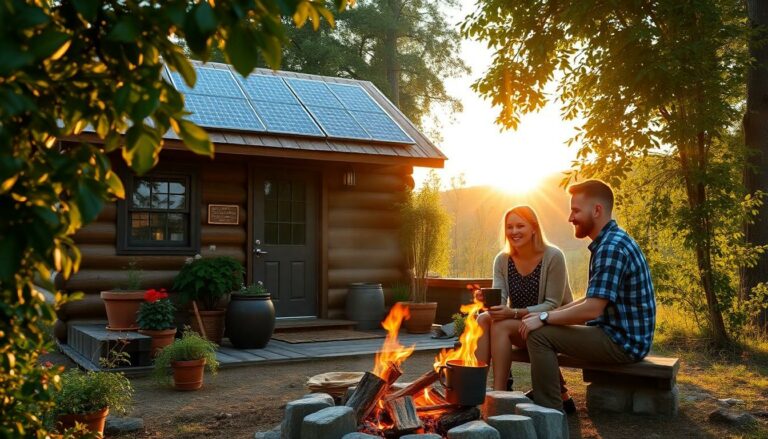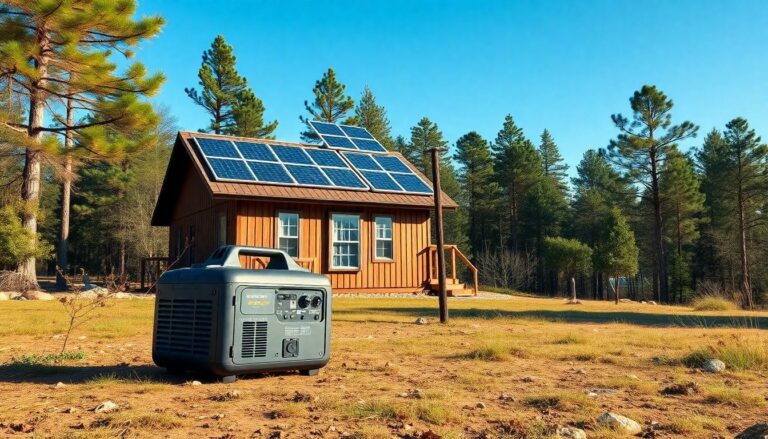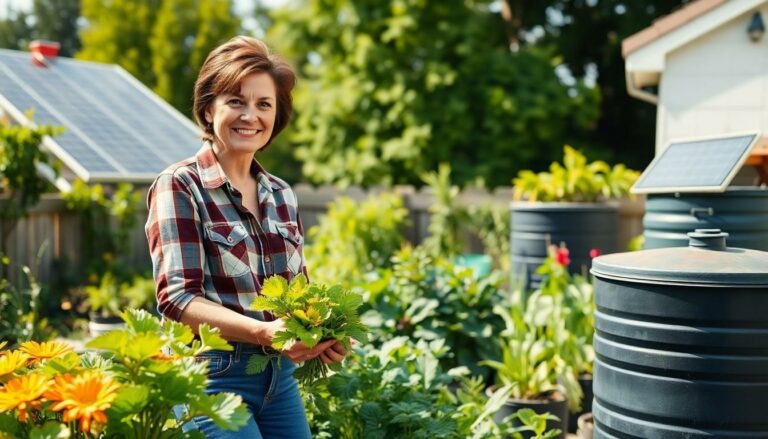Imagine waking up to the sound of chirping birds instead of blaring alarms, surrounded by nature instead of concrete. Off-grid living isn’t just a trend; it’s a lifestyle choice that promises freedom and self-sufficiency. But before you trade your Wi-Fi for wildflowers, you’ll need to stock up on some essential gear to make your off-grid dreams a reality.
From solar panels that harness the sun’s power to composting toilets that even your eco-conscious friend would envy, the right tools can make or break your adventure. Whether you’re a seasoned survivalist or just someone looking to escape the daily grind, understanding these essentials will help you thrive in the great outdoors. So grab your favorite mug of herbal tea, and let’s dive into what you really need for a successful off-grid life—because who says you can’t live sustainably and still have a good laugh along the way?
Off-Grid Living Essentials
Off-grid living requires specific essentials to ensure a sustainable and comfortable lifestyle. Solar panels play a crucial role in generating renewable energy for daily needs. They convert sunlight into electricity, allowing individuals to power devices, appliances, and lighting without relying on external power grids.
Water collection systems also remain vital for off-grid living. Rainwater harvesting can provide clean water for drinking, cooking, and irrigation. Proper filtration systems ensure that water is safe for consumption, reducing dependency on municipal sources.
Another essential component includes efficient waste management solutions. Composting toilets offer a sustainable alternative to traditional plumbing systems. They minimize environmental impact while providing nutrient-rich compost for gardening and landscaping.
Food preservation methods support a self-sufficient lifestyle. Canning jars, dehydrators, and vacuum sealers help individuals store seasonal produce and meats for long-term use. These tools provide a way to maintain a healthy diet while minimizing waste.
Gardening tools enable individuals to grow their own food consistently. Raised garden beds, hand tools, and seed starting supplies empower off-grid residents to cultivate vegetables and herbs year-round. Gardening fosters a deeper connection with nature and enhances food security.
Essential communication tools also contribute to off-grid living. Radios and satellite phones provide reliable communication in remote areas, ensuring individuals stay informed and connected. These devices play an important role in safety and emergency preparedness.
Choosing the right gear enhances comfort in off-grid settings. Portable generators serve as backup power sources during periods of low solar generation. Investing in quality gear maximizes efficiency and sustainability throughout the off-grid experience.
Energy Sources for Off-Grid Living

Energy sources play a crucial role in off-grid living, providing power for daily activities and enhancing self-sufficiency. Understanding the available options ensures effective energy management.
Solar Power Systems
Solar power systems utilize solar panels to capture sunlight and convert it into electricity. These systems often include inverters and battery storage, enabling energy access even during cloudy days. System sizes typically range from 100 watts to several kilowatts, depending on energy needs. Individuals can install solar systems on rooftops or ground-mounted structures, with many selecting portable versions for flexibility. Relying on solar energy significantly reduces dependence on traditional grids, promoting sustainable living.
Wind Energy Solutions
Wind energy solutions harness wind turbines to generate electricity in off-grid locations. Turbines vary in size, producing anywhere from 400 watts to 10 kilowatts. Many choose to install small to medium-sized turbines for personal use. Optimal wind conditions enhance efficiency, making it essential to assess average wind speeds before installation. Additionally, combination systems with solar can maximize energy production. Utilizing wind energy diversifies energy sources, further contributing to energy independence.
Backup Generators
Backup generators provide reliable power during low sunlight or wind conditions. These generators typically run on gasoline, propane, or diesel, functioning as a secondary energy source when solar or wind options are insufficient. Choosing inverter generators offers quieter operation and cleaner energy output, beneficial for both comfort and environmental impact. Generators typically range from 1,000 watts to 10,000 watts, catering to diverse power needs. Integrating backup generators ensures uninterrupted access to electricity, enhancing off-grid living experiences.
Water Supply and Filtration
Access to clean water is critical for off-grid living. Implementing effective water supply methods and filtration systems ensures a sustainable lifestyle.
Rainwater Harvesting
Rainwater harvesting provides a reliable source of water. Collecting rainwater involves using gutters, downspouts, and storage tanks to capture runoff. Systems vary in size and complexity, accommodating individual needs and local climate conditions. For instance, a system that collects 1,000 gallons could supply a small household over several dry months. Cost-effective options include DIY setups using barrels or more elaborate installations, ensuring sustainability. Maintenance is essential; regular cleaning of gutters and tanks prevents contamination.
Water Filtration Systems
Water filtration systems play a vital role in ensuring safe drinking water. Different filtration methods exist, including activated carbon filters and UV purifiers. Activated carbon filters effectively remove contaminants, improving taste and quality. They require regular replacements depending on usage, typically every 6 to 12 months. UV purifiers utilize ultraviolet light to kill bacteria and viruses, ensuring safety from pathogens. Portable filtration options are available for outdoor activities, making them ideal for off-grid living. Choosing the right system aligns with specific needs, ensuring a constant supply of clean water.
Sustainable Food Production
Sustainable food production plays a crucial role in off-grid living. It focuses on self-sufficiency and reducing reliance on external resources.
Vegetable Gardening Techniques
Implementing effective vegetable gardening techniques optimizes food yield. Raised beds enhance drainage and soil warmth for quicker growth. Companion planting promotes pest control and boosts plant health through symbiotic relationships. Crop rotation prevents soil depletion and pest build-up, improving long-term garden sustainability. Utilizing heirloom seeds allows for biodiversity and preserves unique plant varieties. Incorporating organic fertilizers, such as compost or worm castings, enriches soil quality while minimizing chemical use.
Animal Husbandry Basics
Understanding animal husbandry basics ensures successful livestock management. Selecting compatible animal breeds promotes coexistence and enhances farm productivity. Regular health checks keep animals disease-free and thriving. Providing a balanced diet tailored to species needs supports growth and reproduction. Proper housing protects livestock from extreme weather while allowing ample space for movement. Establishing routines for feeding and care fosters animal well-being and simplifies daily tasks.
Off-Grid Shelter Considerations
Choosing the right shelter is vital for successful off-grid living. Several options cater to different needs and budgets, each offering unique advantages.
Types of Off-Grid Housing
Cabins serve as popular choices, often built with natural materials for durability and insulation. Yurts, known for their circular shape and efficient heating, provide flexibility and ease of assembly. Tiny homes, increasingly popular, utilize space effectively while maintaining mobility. Shipping containers, on the other hand, offer sturdy and weather-resistant options. Earth-sheltered homes, built into the landscape, maximize thermal mass and energy efficiency. Each type accommodates various lifestyles, reinforcing self-sufficiency while blending with the environment.
Essential Heating and Cooling
Heating methods vary, with wood stoves offering reliable warmth in cold months. Passive solar design enhances natural heating by strategically placing windows to capture sunlight. Insulation materials like straw bales or foam boards improve energy efficiency year-round. Cooling solutions include natural ventilation techniques, using strategically placed windows and overhangs to promote airflow. Fans and solar-powered options provide additional relief on hot days. Combining these methods adapts to changing climates and conserves energy, ensuring comfortable living throughout the year.
Cultivate Self-sufficiency
Embracing off-grid living offers a unique opportunity for individuals to reconnect with nature and cultivate self-sufficiency. By investing in essential gear and adopting sustainable practices, anyone can thrive in this rewarding lifestyle.
Whether it’s harnessing solar energy or implementing effective water collection systems, the right tools make all the difference. Prioritizing efficient waste management and sustainable food production further enhances the off-grid experience.
Ultimately, the journey toward self-reliance is as much about mindset as it is about equipment. With the right preparation and a willingness to adapt, off-grid living can lead to a fulfilling and environmentally friendly way of life.




